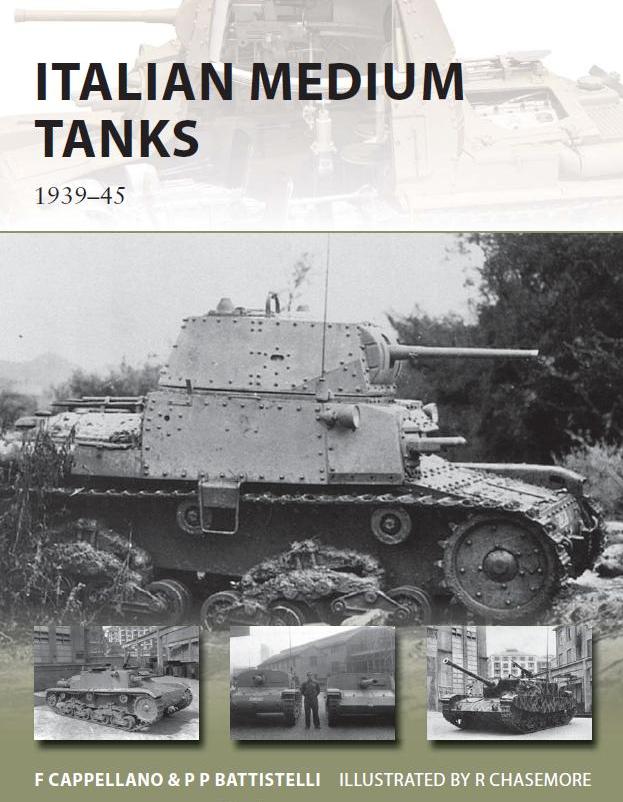Italian Medium Tanks (1939-1945)
Osprey Publishing continues expanding its New Vanguard Collection. This is the issue 195 of this line and it is devoted to the Italian Medium Tank.
The book sections covers the characteristics of the Medium Tanks (M 11/39, M 13/40, and M 14/41), plus a brief section on the Heavy Tank (P 40). It also includes the self-propelled guns that were based on the above-listed chassis. Later in the book there are two sections devoted to Italian armor in combat (both with the Italian Army and under German service). It finalizes with a brief chapter devoted to camouflage and markings and a section on surviving vehicles at different museums.
The Italian Medium tank design during WWII was greatly affected by the military thinking of the pre-war years. During the 1930s, the Italian Army expected to fight a war against France and/or into Yugoslavia in the northern part of Italy. As such, the designs limited the weight of the tank to approximately 7 tons, considering the load limit for bridges in Northern Italy. The design of those tanks was inadequate for fighting in the desert, the ultimate main battlefield for the Italian armored units.
Analysis of the combat indicates that the Italian designs were able to hold their ground against British designs during 1940. However, poor training and lack of radio communication turned the tide against the Italians. By 1941, the British AFV design was clearly superior and still was tactically better prepared for combat than the Italians’. Adding the manufacturing problems of the Italian industry to the equation, the fate of the Italian AFV during WWII was sealed.
Combat in North Africa reached a peak in 1942 and basically El Alamein was the last battle in which there was a large Italian armored presence. By the final battles of Tunisia in 1943, some units had regrouped, but most of the Italian armored assets were lost with the Axis defeat in North Africa.
For those inclined toward illustrations, the book includes six color profiles, one 3-view drawing, two illustrations and one cut-away drawing of a M14/41.
Italian Armored references are few and far between. This book is a welcome addition to the somewhat limited list of references on Italian subjects.
Recommended for armor modelers and history aficionados.
I would like to thank Osprey Publishing and IPMS/USA for the review sample.




Comments
Add new comment
This site is protected by reCAPTCHA and the Google Privacy Policy and Terms of Service apply.
Similar Reviews